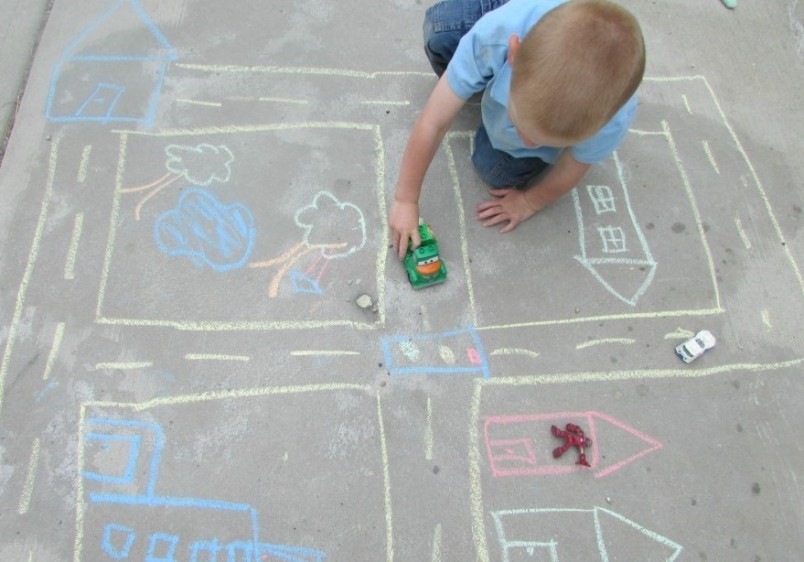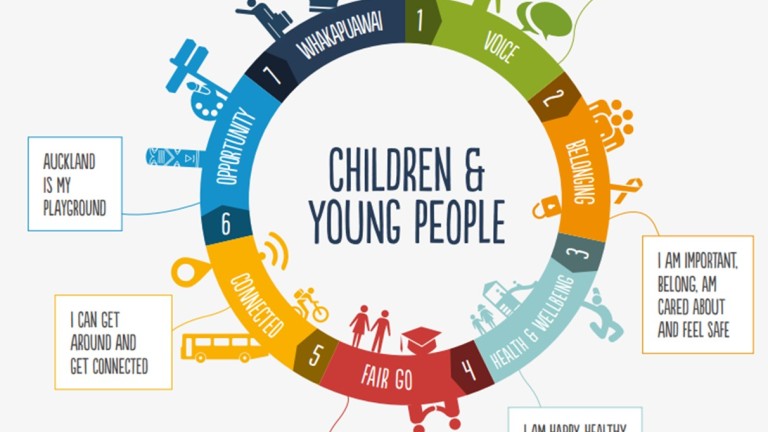Councils have a broader role in fostering liveable communities, beyond simply providing 'core services' - they play an important part in providing the services, amenities and enabling the environment that supports social connection and the wellbeing of its children, young people and their families. This was reinforced earlier this year when the four aspects of community wellbeing – social, economic, environmental and cultural – were reinstated back into the Local Government Act.
During the development of the Child and Youth Wellbeing Strategy, several councils made submissions which highlighted synergies between central government’s vision for children and young people, and their own aspirations at a local level.
Many councils already have, or are working on, plans specifically to support children and young people. Two such councils who have already adopted their own strategic plans focussed on young people in their regions are Porirua and Auckland:
‘At the heart of the city’
Porirua City Council has placed children and young people ‘at the heart of the city’, which involves ensuring their plans and decisions help all Porirua children to reach their potential. It also means providing a healthy and beautiful city in which to grow up.
“We have a diverse and youthful population, with 37% per cent of our population aged under 25. We want them to feel proud of the city they live in and have opportunities to participate in city life,” says Porirua Mayor Anita Baker.
“We also want to give our younger residents a greater say about what kind of city and community they want to live in. As one young resident at a Council Long-term Plan consultation workshop for schools aptly put it – ‘we are the community and we want to be part of making it a cool place to live’.”
The ‘At the heart of the city’ strategic framework has five focus areas:
- Environment and place
- Safety and well-being
- Opportunity and experiences
- Connection and belonging
- Engaged and involved
Some examples of actions resulting from the Strategy include:
- responding to student concerns about reducing waste, by subsidising recycling services for schools and ECEs
- increasing the availability and range of healthy food and drinks at city facilities and events, to help make it easier for children and young people to make healthy choices
- creating three specific funding grants for youth related projects , and recruiting a panel of young people to advise on funding allocations
- increasing opportunities for young people to participate in Council projects and reviews.
- declaring a climate change emergency in response to a petition presented by two rangatahi.
- providing a free bus for 26 decile 1-5 schools to help Porirua students access learning opportunities outside the classroom.
The Annual Status Report helps the council track how well the city’s children and young people are doing, and whether changes need to be made.
Find out more on the Porirua City Council website
I am Auckland
I Am Auckland – the council's children and young people’s strategic action plan was developed in 2013, in partnership with their Youth Advisory Panel and alongside 6,000 young Aucklanders. The plan is part of the council’s commitment to creating an inclusive city where everyone belongs and can participate.
I Am Auckland has seven goals that guide what the council does to create a city where all of Auckland’s children and young people can thrive and reach their full potential:
In 2017 the I Am Auckland Status Report reviewed progress Auckland Council (including its council-controlled organisations) is making towards the goals.
Key achievements included over 200 discrete actions, policies or programmes focused on children and young people, especially in the areas of ‘Goal 4: I am given opportunities to success and to have a fair go’ and ‘Goal 6: Auckland is my playground’.
“Much of what has been successful across all the goals has been co-designed, co-developed and/or co-led by young people themselves, and we’ll continue to encourage this approach,” says Liz Civil, Manager of Community Policy.
In 2018, following the findings from the status report, the council developed the I Am Auckland Implementation Plan and Evaluation Framework to help increase delivery and focus on impact.
“Young people make up a third of our population and are an incredibly diverse group, so it’s important that the we deliver programmes and activities that meet their different needs. It is also vital we understand the impact we are making and continually refine what we do based on what we learn” says Ms Civil.
Some examples of current initiatives and programmes underway include:
- free public transport for children on weekends, supporting whānau to experience different parts of the city
- #AKLPlay, a youth social sports initiative that aims to get young people participating in physical activity in a way that builds confidence, social skills and fitness
- a partnership where Auckland Libraries deliver storytimes at the Auckland Zoo
- enhancing the Career Pathways recruitment programmes, which is providing a youthful and diverse talent pipeline into the council, with nearly 90% of participants securing permanent positions
- UpSouth, an innovative online platform to engage young South Aucklanders on the issues relevant to them and their communities, and reward them for their creative ideas
- supporting the Youth Advisory Panel, and local Youth Voice Groups ensuring youth voices are heard as a regular and expected part of the governance process
- He Pia, He Tauira Rangatahi Placemaking Apprenticeship Programme partnering with the community to grow understanding of local place making.
Find out more on the Auckland Council website, or email: [email protected]

